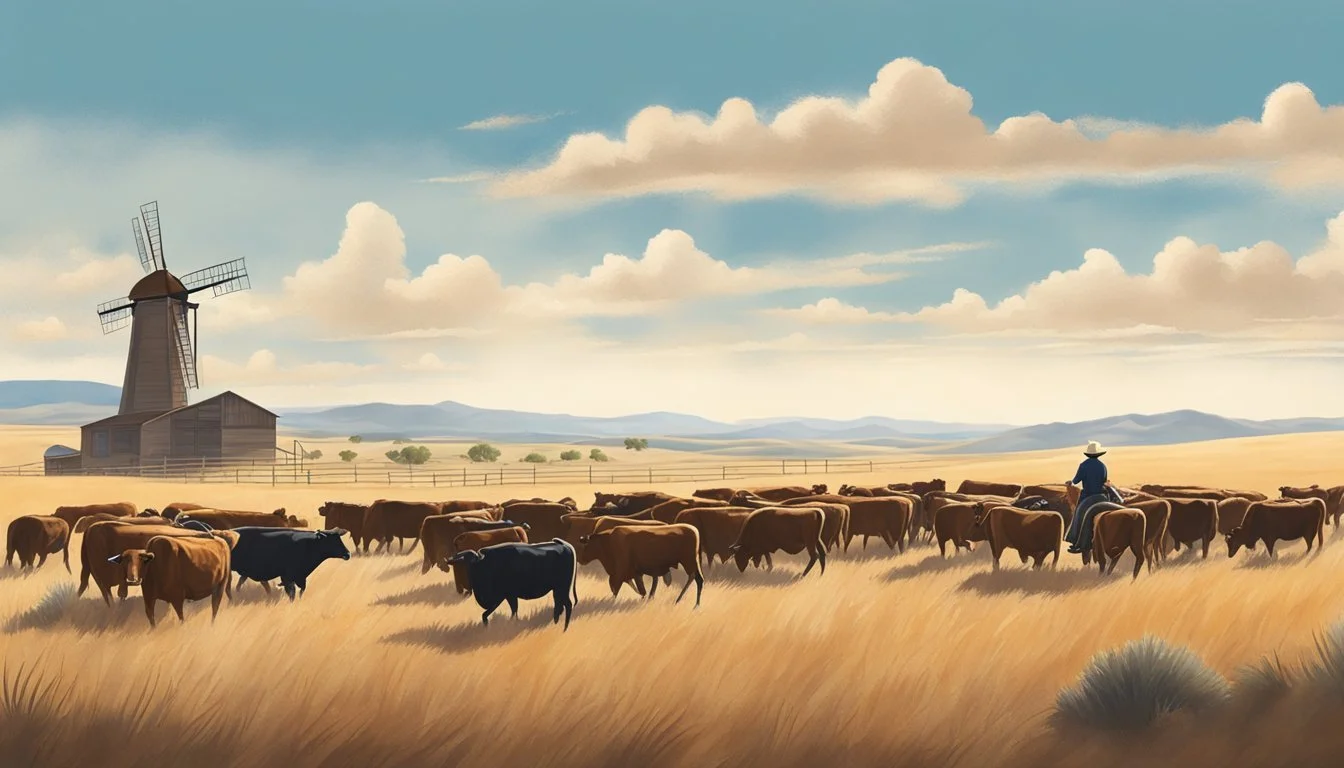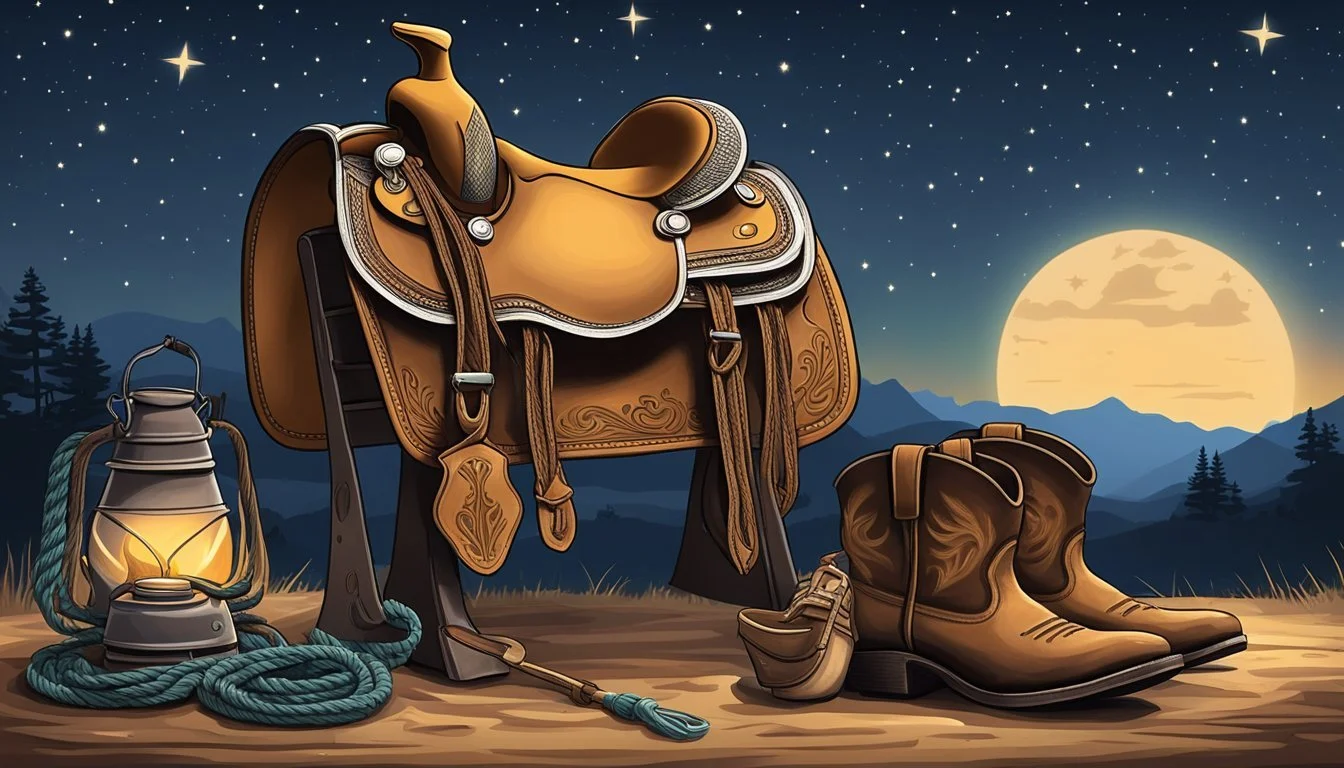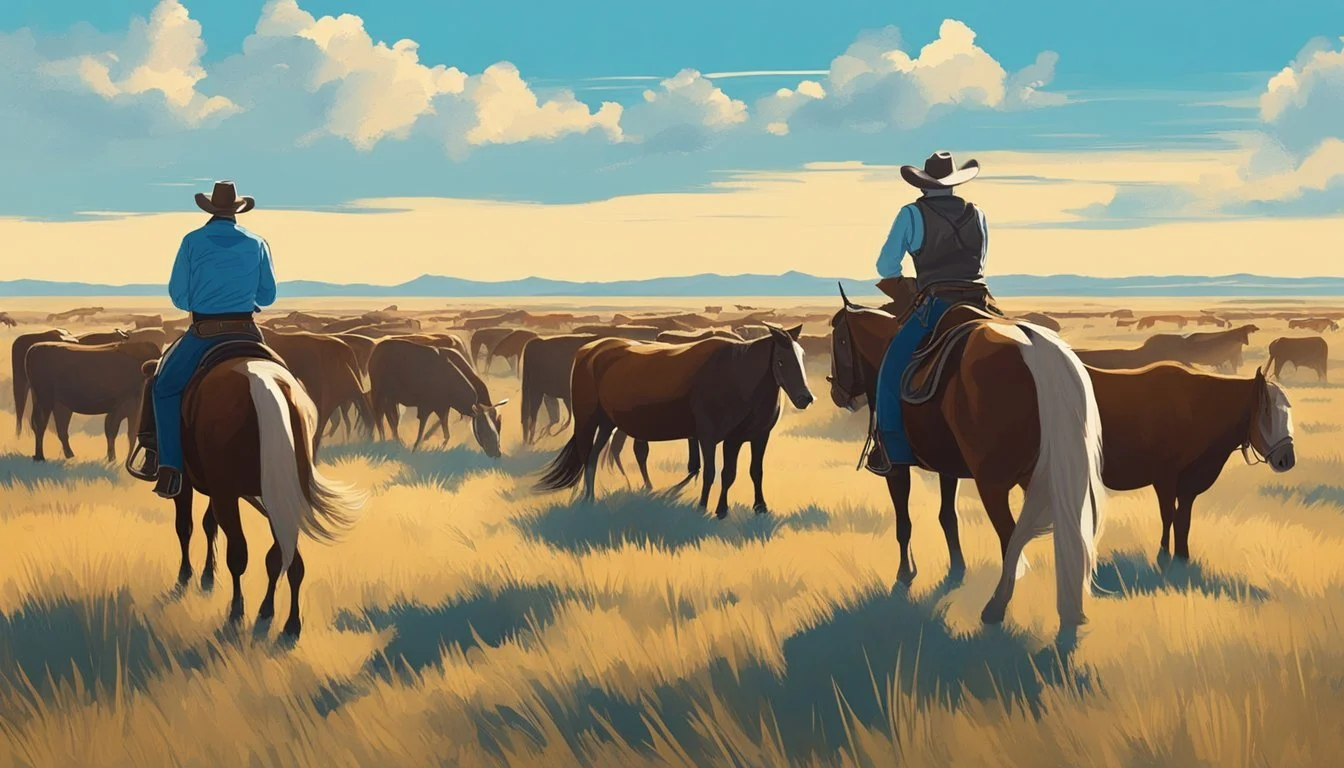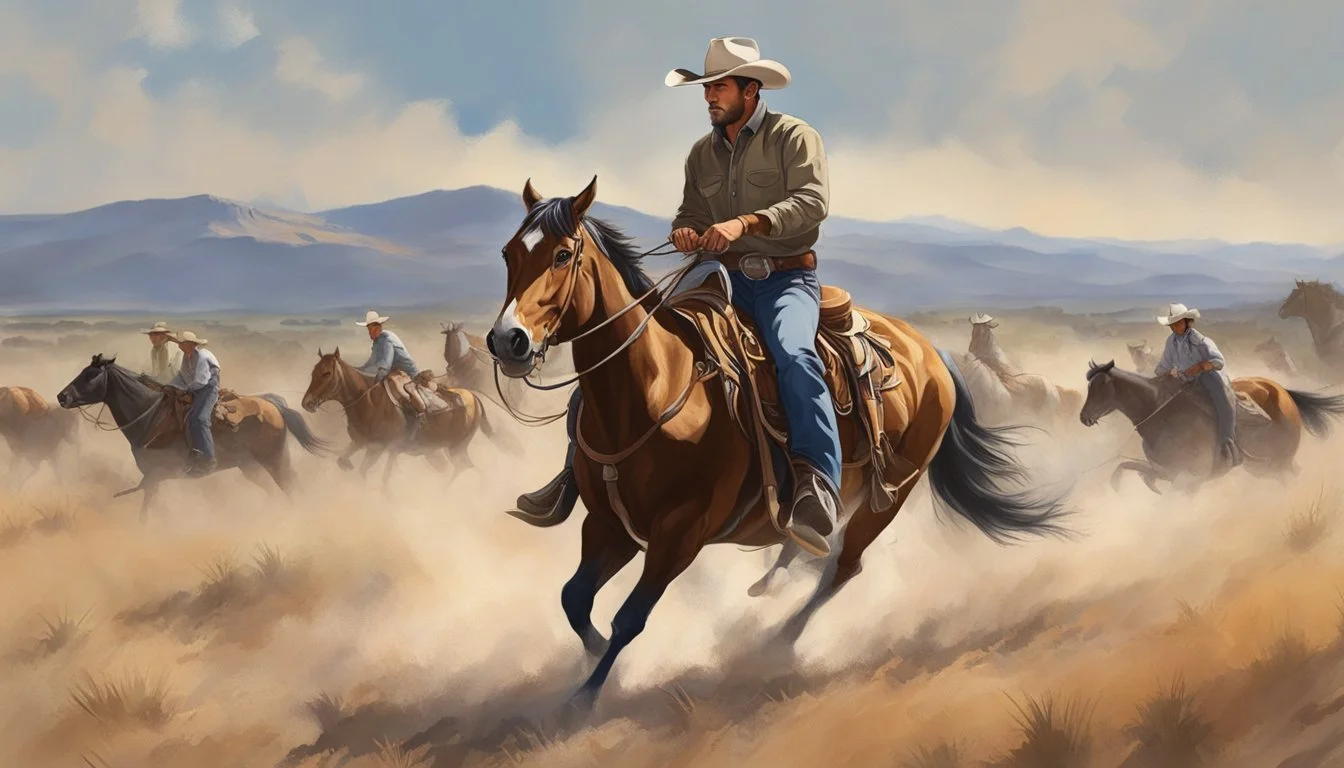A Day in the Life of a Modern Texas Cowboy
Tradition Meets Technology
The Texas cowboy, an icon of American heritage, has evolved over time, maintaining authenticity while adapting to the challenges of modern ranching. These individuals are no mere relics of a bygone era, but rather embodiments of a lifestyle that demands resilience and a diverse skill set. Their lives are steeped in tradition, yet they efficiently incorporate modern technology and practices to meet contemporary demands.
Modern Texas cowboys start their days before sunrise, facing long hours tending to cattle, repairing fences, and managing the land. Their purpose remains largely consistent with the cowboys of yesteryear: they ensure the health and welfare of livestock, contribute to the sustainability of the ranch, and uphold an ethos that has become synonymous with the state's identity. As caretakers of livestock and stewards of vast ranches, they navigate obstacles with a blend of time-honored wisdom and innovative methods.
While Hollywood often portrays cowboys with an air of romanticism, today's Texas cowboy is grounded in practicality and function. They toil in an environment where the weather can be as unforgiving as the terrain, relying on a mix of grit and adaptability. The modern cowboy's role in Texas is a testament to the enduring spirit of the Old West, as they continue to shape the cultural and economic landscapes of their state.
Historical Background
Exploring the evolution of Texan cowboying uncovers a lineage that commences with the Hispanic vaqueros and extends through the shifting tapestries of war, economics, and land management that have indelibly shaped the Texan ranching landscape.
The Legacy of the Vaqueros
The first cowhands of Texas were the vaqueros, originating from Spain's cattle herding traditions. They introduced pivotal ranching skills, from roping to riding, which became the cornerstone of the American cowboy's craft. The vaquero influence seeps through the essence of the modern Texan cowboy, from the attire to the lingo.
The Impact of the Civil War on Texan Ranching
Ranching in Texas faced transformation following the Civil War, with an economic shift driving cattle raising from sideline to industry. The war created a surplus of unattended cattle in Texas, which post-war efforts sought to capitalize on by driving cattle north where demand was high, laying the foundation for the cattle drive era.
From Open Range to Fenced Pastures
The vast open ranges of Texas once allowed cattle to roam freely across the land, guided by cowboys. The introduction of barbed wire in the late 19th century revolutionized this practice, leading to fenced pastures that curtailed traditional drives, controlled grazing, and limited the open frontier.
The Chisholm Trail and Cattle Drives
Among the trails carved out for cattle drives, the Chisholm Trail stands iconic, representing the perilous yet romantic epoch known as the Wild West. These drives were critical economic ventures moving thousands of cattle from Texan ranges to railheads, most notably in Kansas, with the Goodnight-Loving Trail being another noteworthy route fostered during this time.
A Texas Cowboy's Gear and Clothing
Texas cowboys are readily identifiable by their distinctive attire, blending traditional function with modern sensibilities. A cowboy's gear and clothing serve as both protection against the elements and a badge of their trade.
Significance of the Cowboy Hat
The cowboy hat stands as the most iconic symbol of cowboy culture. Beyond its broad brim shielding against the sun, heavy rain, and wind, the hat has established itself as a cowboy's signature. Variations in creases and colors can signify one's specific role or personal style within ranching hierarchy or social settings.
Functionality of Cowboy Boots
They have adapted the original design to suit contemporary needs, ensuring:
Durability: Quality leather to withstand rough conditions.
Fit: Snug without constricting, offering stability and comfort.
Safety: High tops protect shins, and the heel keeps the foot from slipping through stirrups.
Rugged and Reliable Cowboy Apparel
Typical cowboy apparel design prioritizes ruggedness and reliability. The clothing includes:
Shirts: Often long-sleeved, even in heat, to protect against sunburn and brush.
Jeans: Must be sturdy, with reinforced seams.
Chaps: Leather chaps protect legs when moving through thorny brush.
Accessories: Gloves, bandanas, and belts equipped with essential tools for daily tasks.
Daily Activities and Ranch Duties
The modern Texas cowboy's day is punctuated by a series of skilled tasks that require physical endurance and a deep understanding of livestock management.
Routine of a Modern Texas Cowboy
A cowboy's morning often begins well before sunrise, as they ready themselves for a long day of labor-intensive activities. After a hearty breakfast, the cowboy checks on the health of the livestock and ensures that all the animals have fresh water. By lunchtime, they generally take a short break to refuel before continuing with their afternoon tasks. As sunset approaches, they wrap up their work and often spend time maintaining the equipment or preparing for the next day's duties.
Skills and Techniques in Roping
Roping is a critical skill for any cowboy, involving precision and timing. When roping cattle, a cowboy must be adept at quickly and accurately throwing a lasso to capture livestock, particularly when separating individual animals from the herd for medical treatment or branding. This skill is honed through relentless practice to ensure proficiency.
The Art of Herding and Branding Cattle
Herding cattle requires not just physical stamina but also an understanding of animal behavior. Cowboys drive the cattle from grazing fields to pens or corrals, directing their movement on horseback. Branding is then often performed to mark ownership, a practice dating back generations. It is essential for cowboys to execute the branding process swiftly and efficiently to minimize stress on the animals.
The Cattle and Horses
Cattle and horses are the cornerstone of a Texas cowboy's livelihood, with specific breeds playing pivotal roles. Texas Longhorns and versatile horse breeds are integral to the ranch's operations and embody the rich tradition of Texas ranching.
Breed Varieties and the Texas Longhorn
Texas is renowned for its Texas Longhorn cattle, a breed that is not only a symbol of Texan identity but vital to the industry. These longhorn cattle are known for their hardiness, adaptability to Texas's diverse environments, and their distinctive long, curved horns that can extend to over 6 feet. With a variety of coat colors, they are often favored for their leaner meat and historical significance, harkening back to the early days of ranching.
Horse Breeds and their Roles on the Ranch
The horse breeds on a Texas ranch are carefully chosen for their agility, strength, and temperament. Among the most common are the American Quarter Horse and the Paint Horse, both of which are known for their quick sprinting ability and cattle herding prowess. The Quarter Horse, in particular, excels in short-distance speed making it a valuable asset for tasks requiring quick and precise movements, whereas the Paint Horse is praised for its intelligence and calm demeanor which is crucial for day-to-day ranch activities.
Ranch Operations and Land Management
In modern Texas ranching, operations are intricately linked to sustainable land management, leveraging technology and innovative strategies to enhance efficiency and environmental stewardship.
The Importance of Sustainable Practices
Sustainable practices are crucial in modern ranch operations, ensuring that the land can support cattle and other livestock for generations to come. Ranchers must have a thorough understanding of their land's capabilities and limitations. This involves assessing soil quality, water availability, and native vegetation. These factors inform pasture management and determine the nutritional sources for the herd. By implementing rotational grazing systems, ranchers can prevent overgrazing and maintain the health of their grasslands. Additionally, they often construct and maintain fences to manage herds effectively and protect sensitive ecosystems.
Technology and Modern Ranching Strategies
Ranchers today employ various technologies to monitor and manage their ranches more efficiently. Drones, for instance, are used for aerial surveillance of pastures, cattle, and fence lines, enabling ranchers to cover vast expanses of land more quickly than traditional methods would allow. GPS tracking collars on livestock provide real-time data on herd locations, aiding in the swift resolution of potential issues such as illness or separation. Moreover, software solutions are used in land management to track cattle health, breeding patterns, and pasture usage, leading to informed decision-making. The integration of such technologies not only increases the efficiency of ranching operations but also underpins sustainability by promoting precise resource management.
Cowboy Culture and Community
The modern Texas cowboy is deeply rooted in a culture rich with traditions and community. This community spirit is vibrantly alive in rodeos, music, storytelling, and the preservation of history through artifacts and museums.
Rodeos and Festivals as Cultural Milestones
Rodeos stand as a testament to the skills and competitive spirit of the cowboy. These events are steeped in tradition, offering a rousing display of horsemanship, cattle wrangling, and rodeo sports. Festivals often accompany rodeo events, celebrating cowboy culture with:
Barbecue cookouts: Showcasing Texas's rich culinary traditions.
Craft markets: Where artisans sell handmade goods, reflective of the Western heritage.
Music and Storytelling Traditions
Music and storytelling are cornerstones of cowboy culture, serving as mediums to pass down cowboy life and heritage. Country music, with its heart-wrenching ballads and upbeat melodies, encapsulates the cowboy spirit, while storytelling sessions provide a glimpse into the historical adventures of the early cowboys.
Essential elements of cowboy music and storytelling include:
Live performances: Often held around a campfire or at local venues.
Storytelling gatherings: Where tales of the cowboy past and present are shared.
The Role of Artifacts and Museums
Museums play a critical role in preserving the artifacts and heritage of cowboy culture. They are the custodians of history, showcasing the evolution of cowboy life and the cultural significance of this enduring symbol of the West. Within these institutions, visitors can find:
Exhibits: Displaying historic saddles, clothing, and tools used by cowboys.
Educational programs: Offering insights into the impact of cowboys on Texas history.
The Influence of Cowboys Beyond Ranching
The figure of the cowboy extends well beyond the fences of the ranch, casting a long shadow over media representation, Texas cultural identity, and historical relations with Native American tribes. These facets interweave to form a narrative that transcends the day-to-day work of modern cowboys.
Representation of Cowboys in Media
Cowboys have been immortalized in American culture through various media forms, particularly film and television. Films such as The Good, the Bad and the Ugly and True Grit have shaped the mythos around cowboys into one of a rugged, independent hero facing the vastness of the Texas plains. The media often showcases the cowboy way of life, emphasizing a deep connection to the land, horsemanship, and the values of courage and integrity.
Cowboys and Texas Identity
In Texas, cowboys are not just historical figures; they are emblematic of state identity and traditions. Their influence can be seen in Texas festivals, rodeos, and parades that celebrate the cowboy heritage. The cowboy image serves as a symbol for the Texas ethos, representing hard work, connection to the Texas plains, and an enduring spirit.
The Relationship with Native Americans
The history of cowboys is intertwined with that of Native American tribes across the plains. Cowboys and Native Americans both shared a deep connection to the land, albeit from different perspectives and often in conflict. Today, the subtleties of their relationship are acknowledged in more nuanced historical recounts, recognizing both the contributions and the clashes between these two groups that played a significant role in shaping the American West.
Contemporary Challenges and the Cowboy Ethos
The modern Texas cowboy faces a unique blend of challenges while striving to retain their traditional ethos amidst a rapidly changing world.
Adapting to Economic and Environmental Challenges
Economic Pressure: One significant challenge for cowboys today is economic sustainability. With the modernization of agriculture and fluctuating market prices, Texas cowboys must navigate complex financial landscapes. They employ technologically advanced farming equipment and techniques to increase productivity and manage their resources more efficiently.
Environmental Concerns: Ecological difficulties, such as extreme weather patterns and resource scarcity, impose additional burdens. Texas cowboys are adapting to these environmental challenges through:
Water conservation methods: Utilizing rainwater harvesting systems and implementing rotational grazing to maintain healthy pastures.
Land management: Combating invasive species and employing soil preservation techniques to support long-term viability.
Maintaining the Cowboy Spirit in the 21st Century
Persistence of authenticity and independence: Despite the modern challenges, cowboys maintain a resilient spirit. The cowboy ethos — a blend of independence, resilience, and authenticity — remains at the core of their identity. Adhering to this ethos, they:
Preserve Traditional Skills: They continue to hone classic cowboy skills such as horsemanship, cattle handling, and roping while integrating modern technology where beneficial.
Embrace Community: The sense of camaraderie and community support is fundamental, helping them to overcome hardships and maintain their cultural heritage.
In summary, Texas cowboys are faced with the task of reconciling the demands of the present with the values of the past. Through a combination of adaptability and steadfast adherence to the cowboy ethos, they champion a way of life that honors their rich history while forging ahead into the future.
Conclusion
The Texas cowboy, a steadfast symbol of confidence and camaraderie, remains a testament to the state's rich heritage. These modern cowboys carry the legacy fervently into the present, embracing the challenges of the outdoors with a blend of time-honored tradition and contemporary practices. They are knowledgeable in animal husbandry, land management, and the array of skills necessary to navigate the rigors of ranch life.
Despite evolving over the centuries, the essence of Texas cowboys stays unaltered. Their days commence before dawn and conclude after dusk, reflecting a deep-seated dedication to their craft. The camaraderie among them is palpable, woven through the fabric of their shared experiences in the Texan landscape.
Today's Texas cowboy is unyieldingly resilient yet adaptable, preserving the traditions that have long defined this iconic figure. Through their clear and neutral approach to the complexities of ranching, they demonstrate a continual adaptation to both environmental and economic factors that define modern agricultural practices.
This unwavering spirit and collective identity ensure that the essence of what it means to be a Texas cowboy will endure, a cornerstone of the state's identity. The heritage and lore surrounding these stewards of the plains are as enduring as the land they work, a narrative tightly interlaced with the story of Texas itself.
In summary, the life of a Texas cowboy is characterized by a respect for the past and a clear-eyed vision for the future, a harmonious blend of the storied cowboy image with the practical demands of contemporary ranching.








